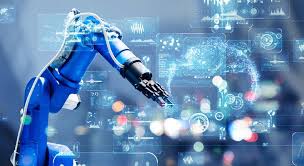Industrial Robotics Startups Enter a Market Worth $73 Billion by 2025
For startups and larger firms, industrial robotics is growing increasingly lucrative. Statistics show that, while the industry is currently worth $44.6 billion, it could expand to as much as $73 billion in just five years. Let’s take a look at why this might be the case.

What is Industrial Robotics?
Industrial robotics revolves around the idea of replacing manual labor with automation or robotic processes. This may be for a variety of reasons.
One key reason to move from physical workforces to automated means may be for cost-saving initiatives. Other industries, such as those in manufacturing and food production, may simply need to increase efficiency. Others might need to enhance QA across the board.
Regardless, the use of robotics is on the rise. Reports suggest that articulated robots, in particular, are dominating matters. This is mainly as a result of reliability, sources suggest.
Recent global matters may also have increased the demand for skilled working. However, truncated movement worldwide may mean that some firms need to turn to robotics to fill gaps left behind.
Research estimates there to be around 12 million industrial robots on-line globally. If financial studies are anything to consider, the number will exponentially increase as the years go by. In fact, further research suggests that the shipment of robotics could boom by up to 12% in just the next three years.
Therefore, this is clearly a niche that ventures are keen to dive into.
How Are Startups Changing the Game?
Industrial robotics startups are in a unique position to take industrial robotics to the next level. Growth projection for this sphere only shrank by 3% in the past few months. That, it is stated, is all during an unprecedented global crisis.
However, to understand how businesses are helping to propel the sphere towards its $73 million projection, we need to look at a few case studies.
An excellent place to start is Diligent Robotics. While telecare has erupted in 2020, enterprises such as DR are working to bring intelligent robotics into the same niche. Specifically, they have designed a medical assistant robot, Moxi, to help deliver supplies.
This robot not only helps to automate tasks to relieve stretched staff levels but may also help to prevent human cross-infections.
In a different industry, Magazino GmbH – based in Germany – is revitalizing European logistics. Specifically, their industrial robots work to strategize stock picking, inventory levels, and decision-making. It is another innovation which, perhaps, has been inspired by recent trends.
These are just two examples of how industrial AI is helping the world to become safer and more efficient. Further innovations, of course, are only just emerging.
A Robotic Future?
Science fiction may not be too far from science fact when it comes to humans living alongside robots. However, for now, industrial robotics are helping us to keep businesses afloat, and consumer demands met.
Investors and third-parties keen to get into robotics can use databases such as Fundz to source startups in the sphere.
SOURCES
https://www.robotics.org/robotics/industrial-robot-industry-and-all-it-entails